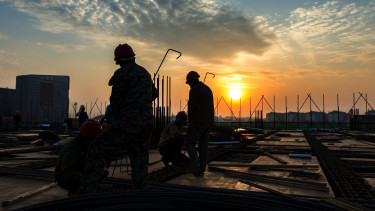COVID-19: 167 deaths, nearly 15,000 new cases in Hungary


Local authorities have performed nearly 74,000 tests over the weekend (Friday to Sunday), more than double as many as a week earlier. The three-day positivity rate came in at 19.9%, up from 17.13% a week earlier. The number of new confirmed COVID-19 cases totalled 14,655 over the past three days, up 150% from a week earlier.
The 3-day / 21-day percent positive dropped to under 100%, but the weekend data are distortive, and we need to see data on Wednesday and Thursday to see more clearly. Given the extremely rapid spread of the Omicron variant, we should not expect positivity rates to subside.



The 7-day rolling average of new COVID-19 is also on the rise, and the number of Covid deaths will follow suit.

The curves below show the 7-day average of COVID-19 cases and the deaths that followed with a 21-day delay (i.e. the dates for the orange line show the number of Covid deaths 21 days later).


How is the situation in hospitals?


On the charts below the 0% line is important. When the curves are under 0% there’s a decline, when they go over 0% it’s an increase. The changes show that the situation in terms of hospitalisations started to worsen after 20 August.
More importantly, when a value is north of 0% but the curve descends, it means an increase at a slowing rate, rather than a decrease. If the curve is above 0% and ascending, it is an increase at an accelerating rate. When we are under 0% and the curve goes lower, it translates into an accelerating decrease, and when it goes up it marks a decelerating decrease. As you can see, we are witnessing the latter here, and there was a turnaround in the improvement around 27-29 December.

What do the changes mean?
The chart below shows the number of hospitalised Covid patients as a percentage of active cases and the On ventilator / In hospital ratio.
When a pandemic 'wave' starts, the percentage of hospitalised patients relative to active cases always soars, because there is still a relatively low number of official cases due to inferior testing practices, and because early on most people with positive tests are likely in hospital.
The green curve peaks around 7% in every 'wave' and then the ratio starts to drop as authorities 'find' more and more infections. The reason why this curve starts to descend even though the number of hospitalisations goes up drastically is because the increase in new confirmed COVID-19 cases is even more staggering.
When there's a relative calm, the red curve picks up sharply, because only those Covid patients are left in hospital that are in severe condition. The others either recovered and were discharged or died.
Early in these waves this ratio always rises rapidly (low number of tests, many in severe condition in hospital, a lot of them in ICUs), but then the ratio starts to improve.
There was an anomaly here, namely that this trend was broken in late November 2021. The proportion of those in hospital to active cases starts to drop, but the proportion of Covid patients in intensive care (relative to those in hospital) goes up. This indicates that there are too few people in hospital compared to before, i.e. there are more serious cases. As it is not the course of the disease that has become more severe, this indicates insufficient hospitalisation.

While about one third of the population (3.18 mn people) are inoculated with three doses of COVID-19 vaccines, about 3.5 million people have not received a single shot yet. Also, as the effectiveness of vaccines wanes over time, about three million Hungarians have diminished or no protection against coronavirus infection, even after two jabs.
The cabinet has announced a new vaccination campaign for January where Hungarians may, after on-site registration, ask for their first, second or third dose of a COVID-19 vaccine. The shots will be administered at vaccination locations between 2 and 6 p.m. on Thursdays and Fridays and between 10 a.m. and 6 p.m. on Saturdays.
The tally of the 'vaccination campaign' was less than 105,000 jabs, including 14,400 first, 21,400 second and 68,900 third doses.



Cover photo: Getty Images







